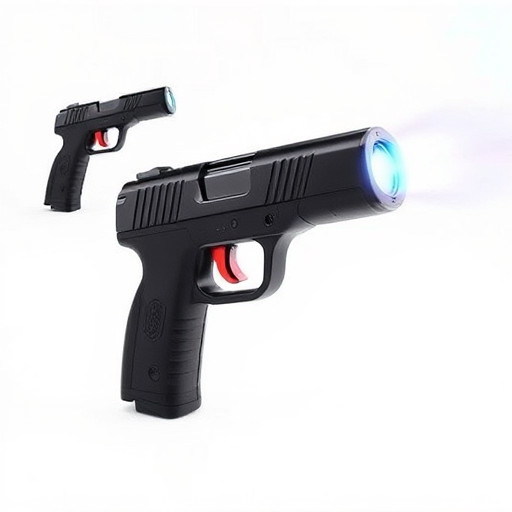Stun guns (electronic control devices or ECDs) operate by delivering a high-voltage, low-amperage electric shock through metal probe tips, disrupting the nervous system and causing temporary muscle paralysis. This non-lethal method allows users to escape or summon help until assistance arrives. Effectiveness varies based on settings and individual tolerance, with potential risks and side effects requiring caution and proper training before use.
Stun guns, a popular non-lethal self-defense option, have saved countless lives by temporarily incapacitating assailants. But what exactly happens to the human body when struck by one? This article delves into the mechanics of stun guns, exploring the science behind electrical shock and its impact on muscle control. We’ll dissect the stun gun’s energy delivery system and analyze safety considerations for effective, yet responsible, use.
Understanding Stun Guns: A Non-Lethal Self-Defense Tool
Stun guns, also known as electronic control devices (ECDs), are non-lethal weapons designed to incapacitate an attacker temporarily, allowing users to escape or summon help. They work by delivering a powerful electric shock through two electrodes that make contact with the target’s body. This shock disrupts the nervous system, causing muscle contractions and disorientation. The result is a profound lack of control, enabling the user to defend themselves until assistance arrives.
These devices operate on a simple principle: applying an intense electrical pulse to disrupt normal bodily functions. Modern stun guns use compact high-voltage, low-amperage electricity, making them safe for users and bystanders alike while ensuring effective self-defense. Understanding how they work is crucial for anyone considering carrying such a device as a means of personal protection.
The Science Behind Electrical Shock: Disrupting Muscle Control
Stun guns, also known as electronic control devices (ECDs), utilise electrical shock to incapacitate a target. The science behind their effectiveness lies in disrupting muscle control through electric current. When activated, stun guns emit a high-voltage, low-amperage electrical pulse, which is conducted through two metal probe tips that make contact with the subject’s body. This current interferes with the electrical signals that muscles rely on for contraction, effectively paralyzing them momentarily.
The result is a sudden loss of muscle control, particularly in the legs and arms, leading to a fall or immobilisation. The electric shock disrupts the nervous system’s ability to send signals to the muscles, causing a temporary but powerful effect. This disruption is non-lethal and designed to subdue an individual quickly, providing a window of opportunity for law enforcement or security personnel to control or apprehend the target.
Stun Gun Dynamics: Energy Delivery and Impact on the Body
Stun guns, also known as electric stun weapons, operate on a simple yet powerful principle: delivering an intense electric shock to disable or temporarily incapacitate a target. When activated, these devices emit a high-voltage, low-amperage electrical pulse through two prongs or electrodes. This energy is transferred from the stun gun to the body of the intended target, causing a range of physiological responses.
The impact of the shock can lead to muscle spasms, loss of balance, and temporary paralysis. The electric current disrupts the normal functioning of the body’s nervous system, specifically targeting motor neurons. This disruption results in a strong contraction of muscles, which can cause the individual to fall or lose control. The effect is designed to be non-lethal, but it can still leave the target immobilized for several minutes, providing an opportunity for the user to escape or subdue the person safely.
Safety Considerations: Effective Use and Potential Risks
Stun guns, also known as electronic control devices (ECDs), operate by delivering an electric current through a pair of prongs or probes into the target’s body, disrupting their nervous system and causing temporary incapacitation. The intensity of the shock can range from mild discomfort to severe pain, depending on the device’s settings and the individual’s tolerance. Despite their non-lethal nature, stun guns should be used with extreme caution.
Effective use requires understanding the device’s limitations and potential risks. Incorrect usage or aiming can result in unintended injuries, especially if the prongs make contact with sensitive areas like the neck or head. Additionally, individuals with certain medical conditions, such as heart problems, might be more susceptible to adverse effects. Therefore, proper training and familiarity with the stun gun’s safety features are crucial before considering its use in real-world scenarios.
